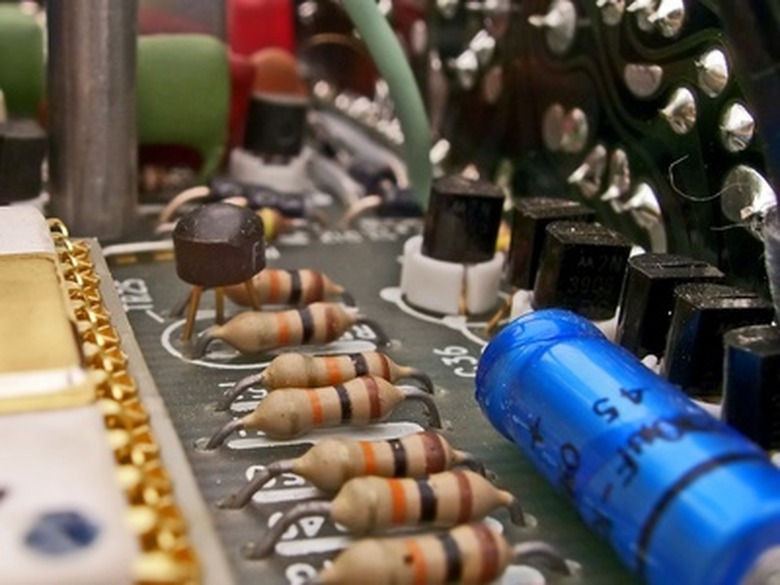How To Test Resistors In A Circuit
The resistor is a vital component found in almost every imaginable electronic circuit. It shapes the electrical signal as it passes through based on the voltage and current. A bad resistor could ultimately lead to other components of a circuit failing, or the complete shut down of a circuit altogether. If you suspect a bad resistor is at the root of your electrical problems, you can conduct a simple test with a multimeter without ever removing the resistor from the circuit.
Step 1
Connect the black and red probes to the proper terminals on the face of the multimeter. The black probe is connected to the "COM" terminal on the multimeter, and the red probe is connected to the terminal marked with an ohm symbol for resistance.
Step 2
Turn the multimeter dial to the resistance setting.
Step 3
Power off the circuit containing the resistor you wish to measure. Never measure a resistor in a circuit with a live current running through it.
Step 4
Discharge any capacitors in the circuit by touching the leads of a spare, high wattage resistor to the leads of the capacitors. Keep the leads jumped for several seconds to fully discharge any stored power.
Step 5
Touch one multimeter probe to each lead of the resistor. If the leads are not accessible, touch the probes to the point where the lead is soldered to the circuit. Since resistors are not a directional component (electricity flows freely in both directions across the component) you may connect either probe to either lead of the resistor without altering your reading.
Step 6
Observe the reading on the display. A good resistor should test within its rated range. A bad resistor will either show infinite resistance or a measurement far higher than its rated resistance. In either case the resistor is no longer functioning properly.
Things Needed
- Multimeter
- Spare resistor
Warning
Failing to remove power from the circuit or discharge capacitors could result in damage to your multimeter in addition to misleading measurements.
Cite This Article
MLA
Krause, Kevin. "How To Test Resistors In A Circuit" sciencing.com, https://www.sciencing.com/test-resistors-circuit-5989061/. 24 April 2017.
APA
Krause, Kevin. (2017, April 24). How To Test Resistors In A Circuit. sciencing.com. Retrieved from https://www.sciencing.com/test-resistors-circuit-5989061/
Chicago
Krause, Kevin. How To Test Resistors In A Circuit last modified March 24, 2022. https://www.sciencing.com/test-resistors-circuit-5989061/
